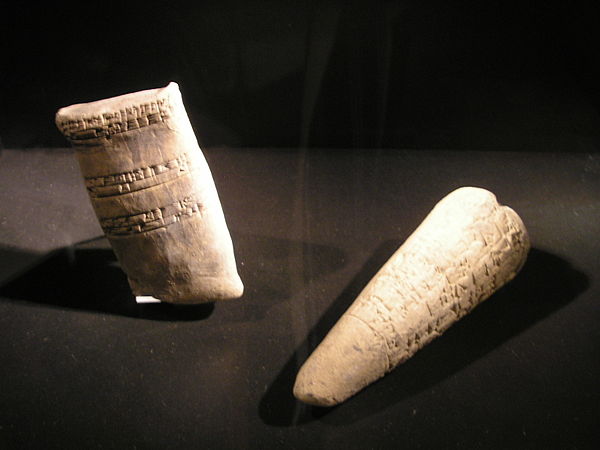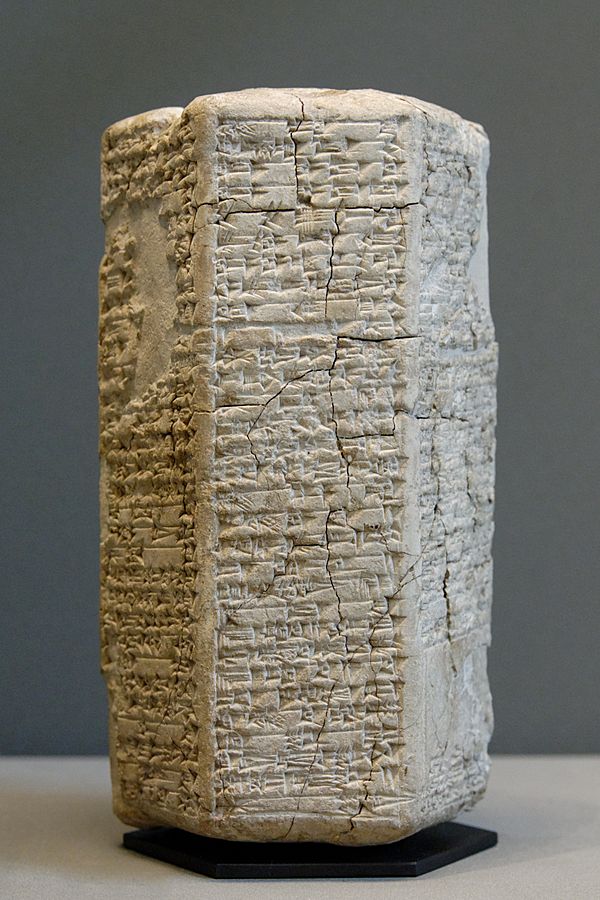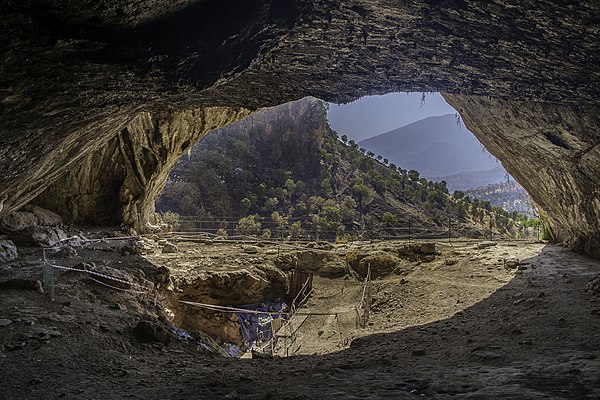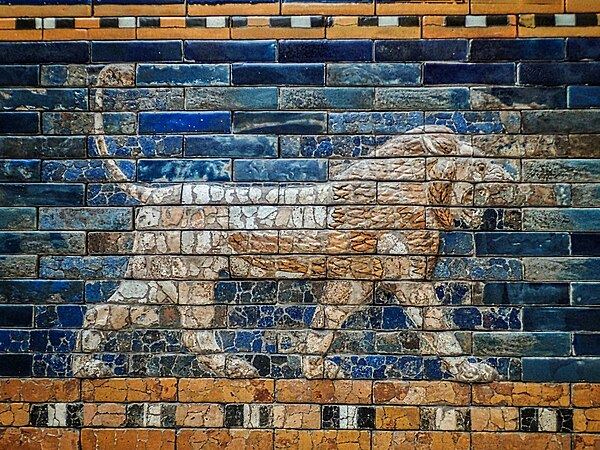Isin
Videos
Page
Isin (Sumerian: 𒉌𒋛𒅔𒆠, romanized: I3-si-inki, modern Arabic: Ishan al-Bahriyat) is an archaeological site in Al-Qādisiyyah Governorate, Iraq which was the location of the Ancient Near East city of Isin, occupied from the late 4th millennium Uruk period up until at least the late 1st millennium BC Neo-Babylonian period. It lies about 40 kilometers southeast of the modern city of Al Diwaniyah.

Looters at the site of Isin

Left: Cuneiform clay tablet. Old Babylonian, 1900-1700 BC Right: Sumerian cuneiform "foundation stone". This clay cone was embedded in a wall, and contains the deed of foundation of the city walls of Isin (Tell Bahriyat) by king Ishme-Dagan of Isin (1953-1935 BC)

A praise poem to Iddin-Dagān from the site, currently at Musée du Louvre

Seal of Dakiya, son of Isin king Damiq-ilishu, as a high official of Samsu-iluna, after the loss of his father's kingdom.
Iraq
Videos
Page
Iraq, officially the Republic of Iraq, is a country in West Asia and in the geopolitical region known as the Middle East. With a population of over 46 million, it is the 31st-most populous country. It is a federal parliamentary republic that consists of 19 governorates. Iraq is bordered by Turkey to the north, Iran to the east, the Persian Gulf and Kuwait to the southeast, Saudi Arabia to the south, Jordan to the southwest, and Syria to the west. The capital and largest city is Baghdad. Iraqi people are diverse; mostly Arabs, as well as Kurds, Turkmen, Assyrians, Armenians, Yazidis, Mandaeans, Persians and Shabakis with similarly diverse geography and wildlife. Most Iraqis are Muslims – minority faiths include Christianity, Yazidism, Mandaeism, Yarsanism and Zoroastrianism. The official languages of Iraq are Arabic and Kurdish; others also recognized in specific regions are Turkish, Suret, and Armenian.

Inside the Shanidar Cave, where the remains of eight adults and two infant Neanderthals, dating from around 65,000–35,000 years ago were found

Statue of Sumerian ruler Gudea of Lagash

Bronze head of an Akkadian ruler from Nineveh, presumably depicting either Sargon of Akkad, or Sargon's grandson Naram-Sin

Detail of a relief from the reconstruction of the Ishtar Gate, which display symbols of the Babylonian god Marduk.